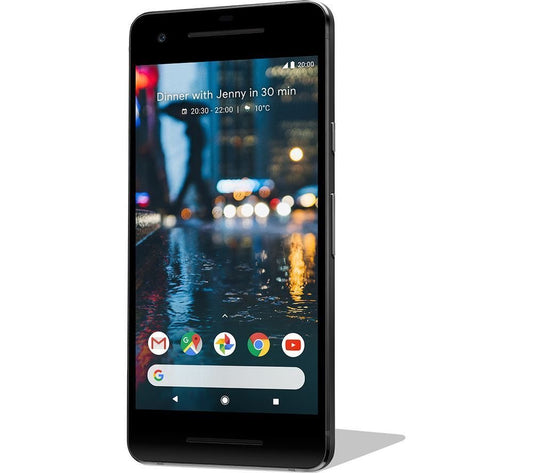Frequently Asked Questions
1. What is website performance?
2. How can I improve my website's load speed?
3. Why is mobile responsiveness important for my website?
4. What are some effective ways to enhance user experience on my site?
5. How can I measure and analyze my website's performance?
In today’s digital landscape, the performance of your website can make or break user satisfaction. Whether you are running an online store like Privacy Portal or a blog, a fast and responsive website is crucial. Visitors expect instant access to information and a seamless shopping experience. Let’s explore how to enhance your website performance to keep your users happy and engaged.
Understanding Website Performance
Website performance refers to how quickly and efficiently a website responds to user interactions. Factors such as load time, responsiveness, and overall user experience significantly impact a visitor’s satisfaction. Here are essential aspects to consider when aiming to improve your website's performance:
Page Load Speed
Studies show that users abandon a site if it takes longer than three seconds to load. Fast load times are essential for retaining visitors. You can use tools like Google PageSpeed Insights to analyze your website speed and identify areas for improvement. Here are some optimization techniques:
- Optimize Images: Large images can slow down load times. Use formats like JPEG 2000, WebP, or AVIF for better compression.
- Minimize HTTP Requests: Reduce the number of elements on your page to speed up loading time.
- Enable Compression: Use Gzip to compress your files for faster downloads.
Mobile Responsiveness
With many users accessing websites through their mobile devices, mobile responsiveness is critical. Google Pixel 8 and Fairphone are examples of popular smartphones, and ensuring that your website works well on these devices is essential. A responsive design minimizes the need for pinch-zooming or horizontal scrolling, enhancing user experience. Here are some tips:
- Use a Fluid Grid Layout: Ensure your layout adapts to any screen size.
- Optimize Touch Elements: Make buttons and links easy to tap on, avoiding too small touch targets.
- Test On Multiple Devices: Regularly check your site’s performance on various mobiles and tablets.
Enhancing User Experience
Performance is not only about speed. User experience encompasses how users interact with your site from the moment they arrive. Here are some features you can implement to enhance their experience:
Intuitive Navigation
When visitors arrive at your online store, they should be able to navigate easily. Confusing navigation can frustrate users and lead to higher bounce rates. Here are a few tips to enhance your site’s navigation:
- Simplify Menus: Use drop-down menus wisely to prevent clutter.
- Highlight Important Links: Make sure key pages like your product categories are easily visible.
- Search Functionality: Implement a robust search feature to help users find exactly what they are looking for.
Clear Call-to-Actions
A strong call-to-action (CTA) can guide users along their buyer’s journey. Your CTAs should be clear, compelling, and strategically placed throughout your pages. Keep in mind:
- Use Actionable Language: Phrases like "Shop Now" or "Get Started" can create urgency.
- Visibility is Key: Place CTAs where users naturally look, such as above the fold or at the end of product descriptions.
- Test Different Versions: A/B testing different CTAs can provide valuable insights on what works best for your audience.
Technical Optimizations for Performance
In addition to user experience enhancements, there are technical factors that can dramatically impact your website’s performance:
Use of Content Delivery Networks (CDNs)
A CDN can distribute static content across multiple servers which minimizes load times for users based on their geographical location. It is particularly effective for e-commerce sites, allowing for faster page loads regardless of where your visitors are. Consider incorporating a CDN to enhance global reach and performance.
Reduce Server Response Time
Your web hosting provider plays a significant role in performance. A slow server response time can hinder even the best-optimized websites. Here’s how to tackle server response time issues:
- Choose the Right Hosting Plan: Depending on your traffic levels, a shared hosting plan may not suffice. Consider VPS or dedicated hosting for a boost.
- Limit Plugins: Excessive plugins can bloat your site and slow it down. Audit and reduce the number of plugins you use.
- Use Caching: Implement caching solutions to speed up your website's loading times.
Measuring and Analyzing Performance
To effectively improve website performance, you need to measure and analyze data continuously. This will help you identify what works and what doesn’t. Here are tools and metrics to consider:
Analytics Tools
Using tools like Google Analytics or Hotjar can provide insight into how visitors interact with your website. Monitor metrics such as:
- Bounce Rate: High bounce rates indicate users are leaving without engaging.
- Pages per Session: A higher number signifies good navigation and content engagement.
- User Flow: Understanding how users navigate through your website can help identify pain points.
Setting KPIs
Key Performance Indicators (KPIs) are essential for tracking progress over time. Some KPIs to consider include:
- Load time
- Conversion rates
- Average session duration
Regularly reviewing these KPIs will guide you in making data-driven decisions to enhance your website's performance.
Final Steps for Sustaining Performance
While implementing these strategies can significantly enhance website performance, it's important to maintain consistent improvements. Here are some final strategies to ensure ongoing success:
Regular Updates
Keeping your website content fresh and up to date is crucial. Regularly update product information, blog content, and other educational resources to keep visitors returning. This not only improves SEO but also keeps your users informed.
Continuous Testing
What works today may not work tomorrow. Regularly testing different elements of your site, from design to navigation and content, can provide insights into what resonates most with your users. A/B testing can play a vital role here, allowing you to make informed adjustments.
Stay Informed and Adapt
The digital landscape is ever-evolving. Staying informed about trends, new tools, and technologies in web design and performance optimization will ensure that your website keeps pace with user expectations. Regularly check for updates regarding search engine algorithms and adjust your strategies accordingly.
Grow Your Online Store with Confidence!
Improving your website performance is an ongoing journey that pays off in user satisfaction and loyalty. By focusing on factors such as load speeds, mobile responsiveness, user experience, and consistent measurement, you will create a site that not only attracts visitors but keeps them coming back.
Elevate your e-commerce journey and create an online shopping experience your users will never forget. Small adjustments can yield significant satisfaction, making your Shopify store a go-to destination in the crowded digital marketplace. So what are you waiting for? Start implementing these strategies today and watch your user satisfaction soar!








